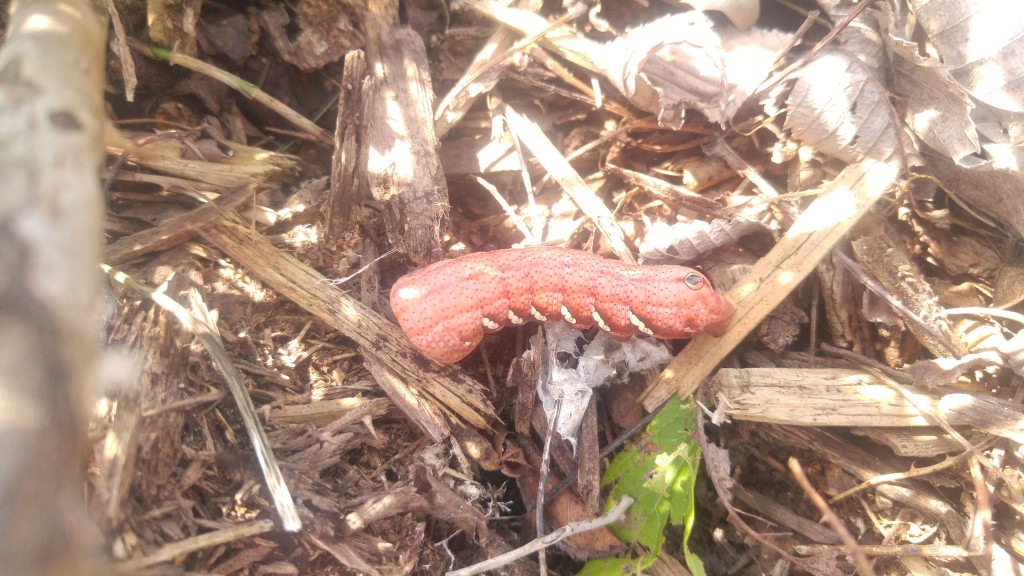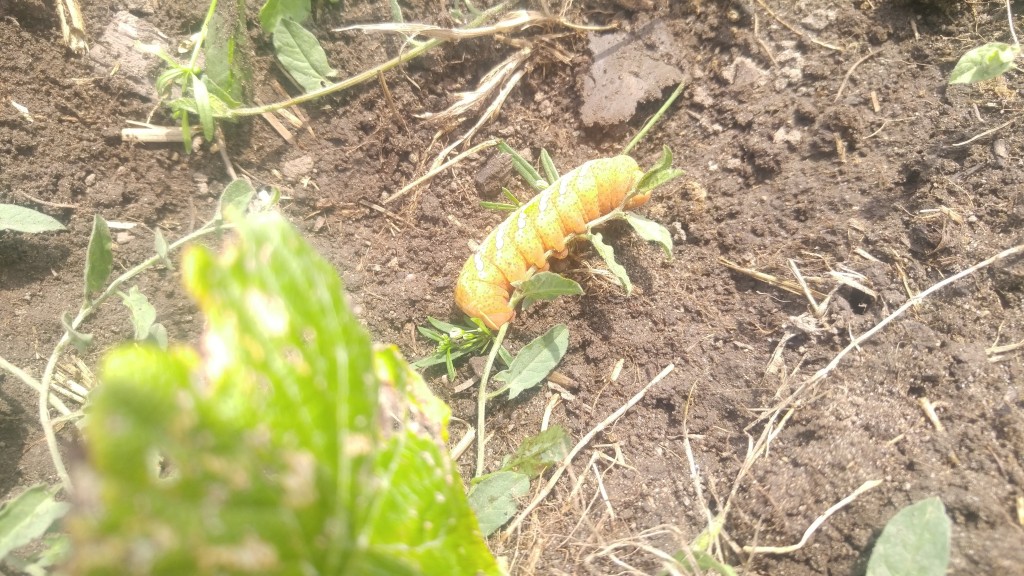When you spend a lot of time outdoors in the garden, you’re bound to run across some interesting things from time to time.
This week I was working around some grapevines. In one area I was cleaning up neglected rose bush pulling out an assortment of weeds including a small wild grapevine. It was there I found the odd-looking, pink caterpillar of a Achemon sphinx moth munching on grape leaves.
The next day I was moving a few small grapevines from one location to another and found two more caterpillars, one orange and the other green. One was another Achemon the other looked to be a Virginia creeper sphinx moth. They are closely related to each other and both are related to tomato hornworms, as you could probably guess that by the horn on their posterior.
It’s been a few years since I’ve seen these even though there are a lot of grapes in our area. I usually have to travel to another area to see them and that was the cases this week.

A pink caterpillar this size really catches your eye, over two inches long. Here the caterpillar’s “horn” has shrunk down to resemble an eye.
Because they are so big at this stage, they can eat quite a bit but not enough to do any real harm to the grapevines and harvest size is not affected by their feeding either.They will keep eating and get bigger. In a week or two when they are full size, they will burrow into the soil then form a pupa. There they will stay until next summer when they will emerge as a large moth.
If left alone they have the potential to overwhelm a vineyard but their numbers are kept in check by parasitic wasps. Those wasps deposit their eggs into the caterpillar’s body where the eggs hatch. The young wasp larvae then feed on the caterpillar and eventually complete their larval stage of life.
Like a lot of moths, they are only active at night sipping nectar from flowers. Although I’ve only seen a few at night, I occasionally have found them in the morning clinging to a walls near a flower garden. One time I even found one inside, it must have flown in when someone open the door.
I ended up moving the caterpillars to an old, well-established grape vine where I knew they couldn’t do any harm. Once they settled down from all the ruckus, they went back to happily munching leaves as if nothing happened.
Bob
